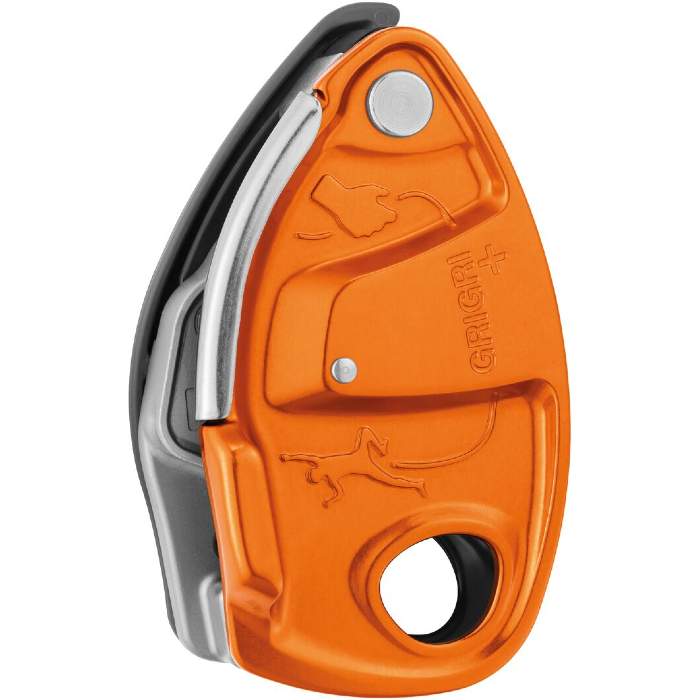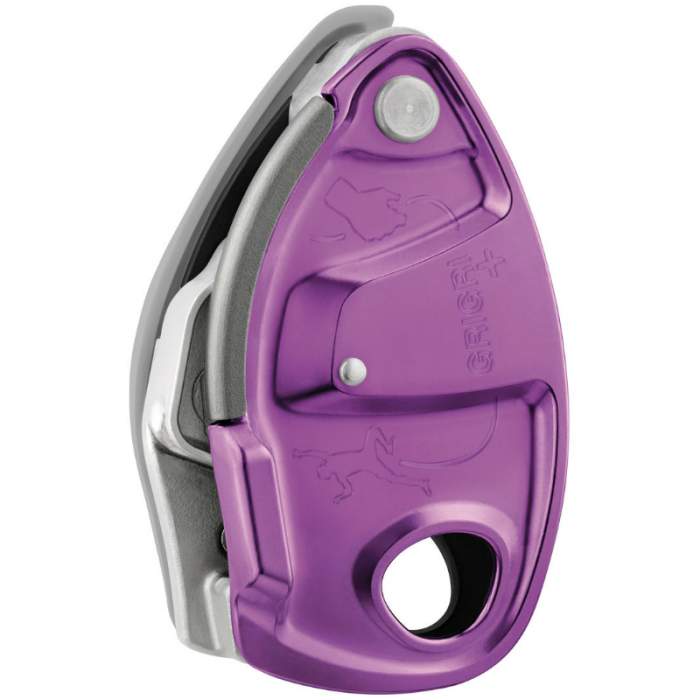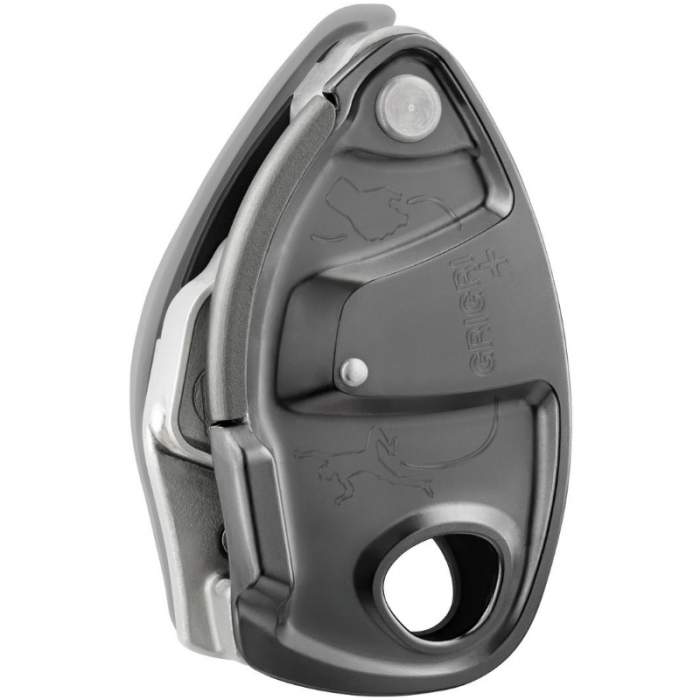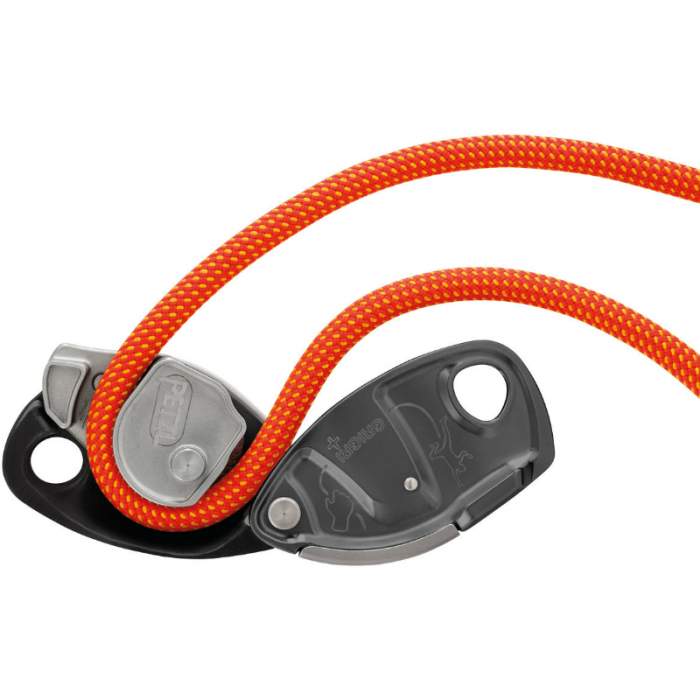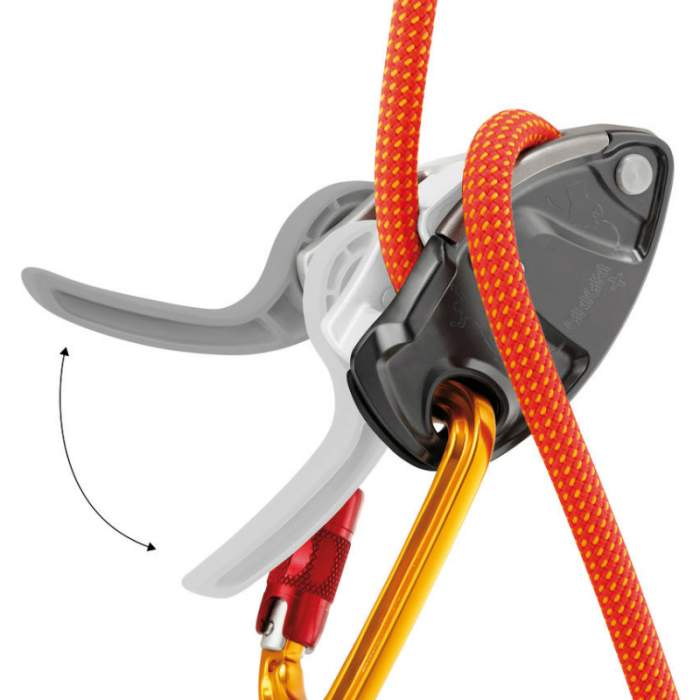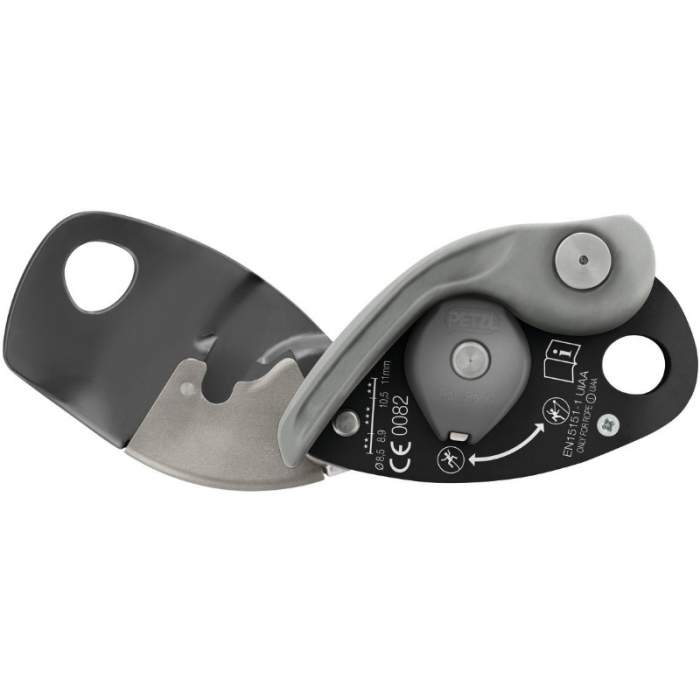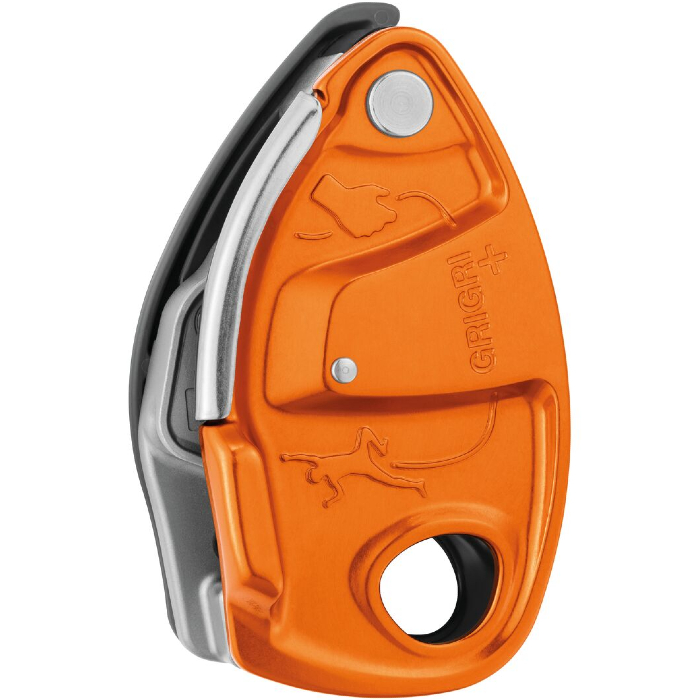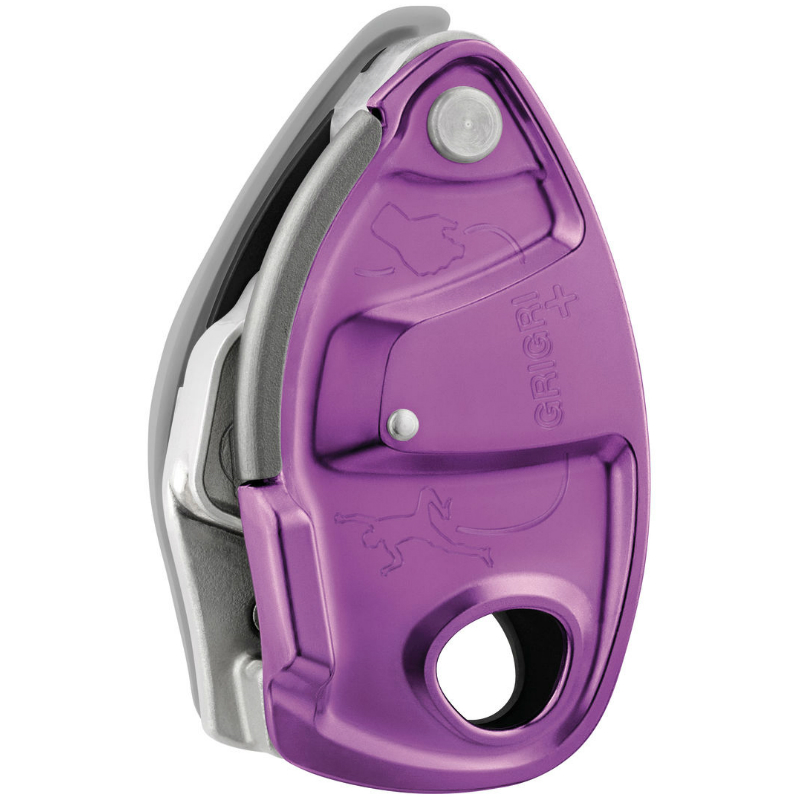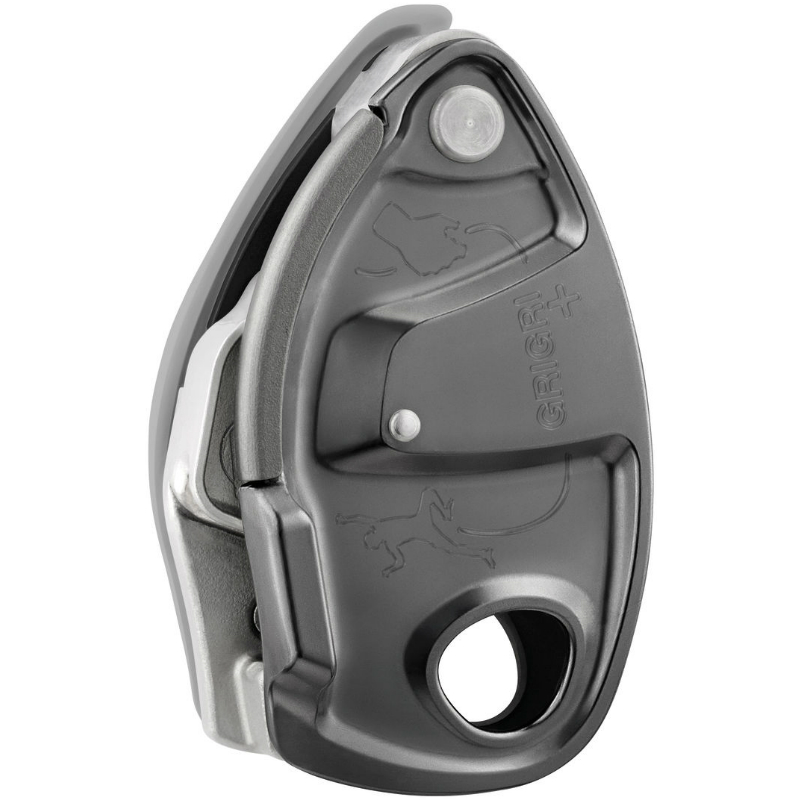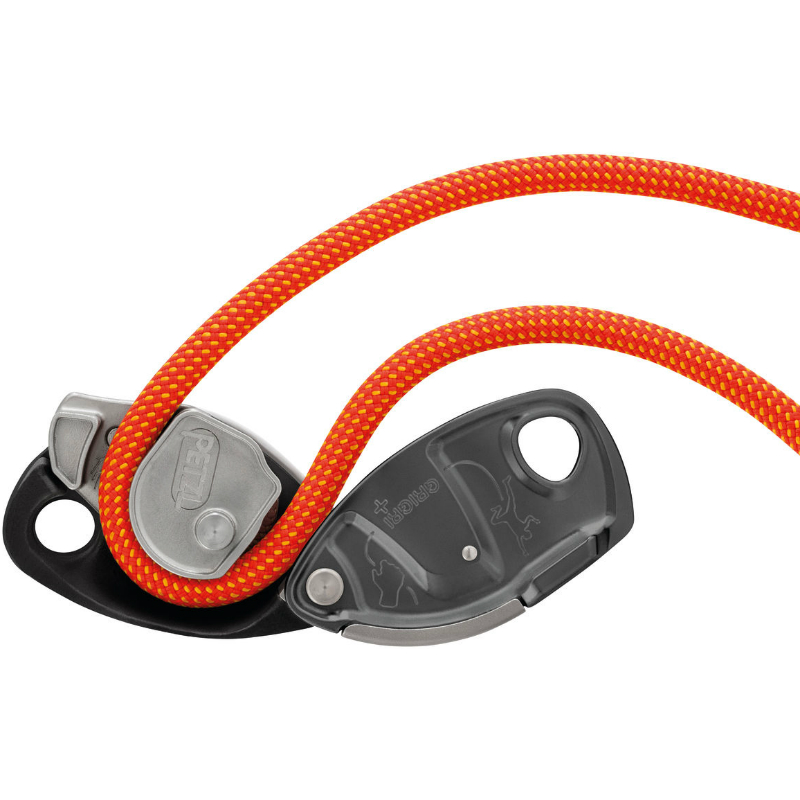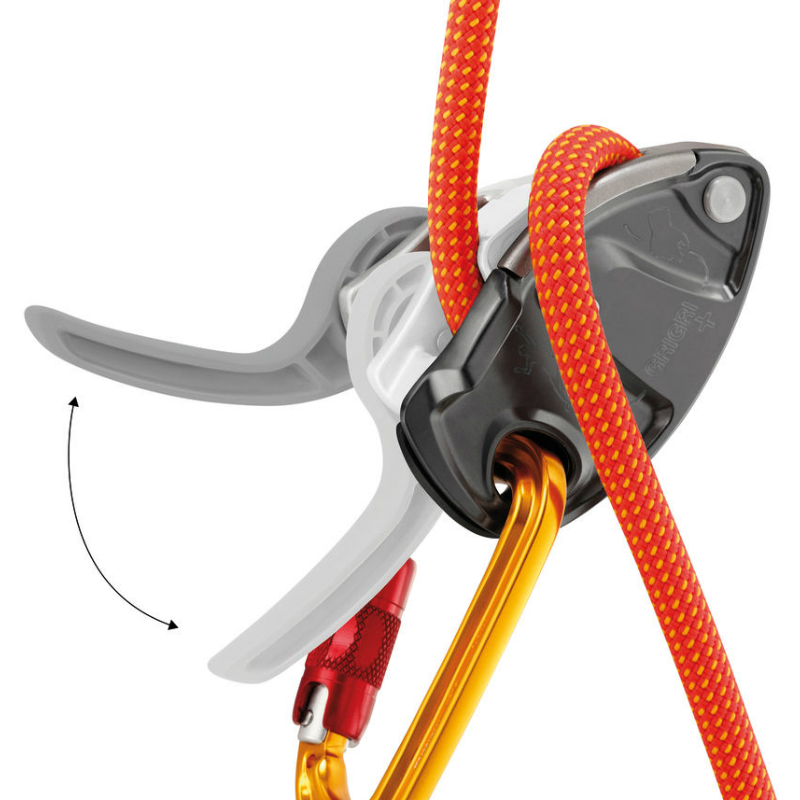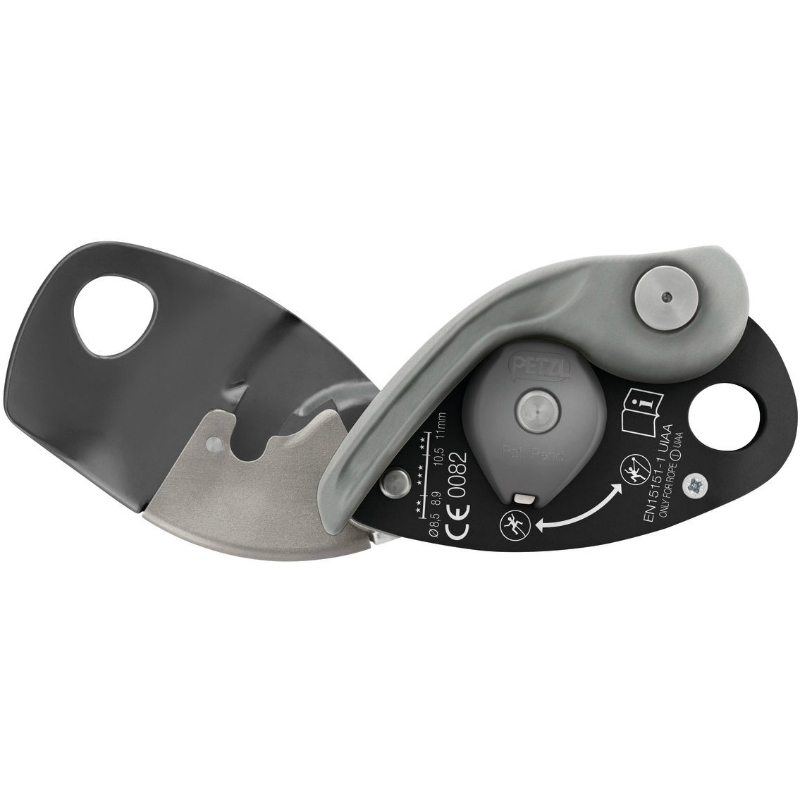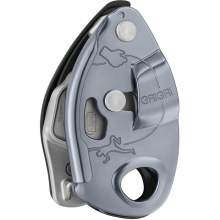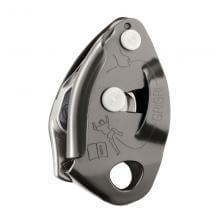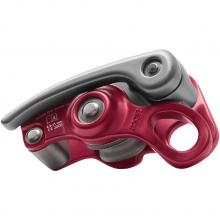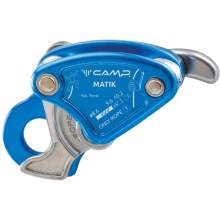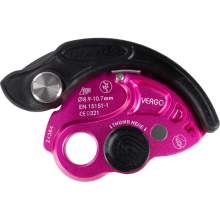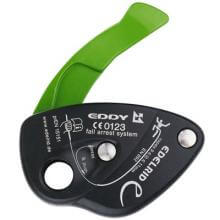GriGri +
Description
Belay device with assisted braking and anti-panic handle, for all single rope diameters
GRIGRI + is an assisted braking device designed for all climbers, for both indoor and outdoor climbing. It can be used with all single ropes and is suited for intensive use. The reduction handle offers exceptional descent control. Two usage modes to choose from, depending on need: top-rope belay or lead belay. The top-rope belay mode and the anti-panic handle make for a more comfortable belay, making the GRIGRI + particularly suitable for learning.
Description
- Belay device with assisted braking for indoors and outdoors, designed for all climbers:
- hand motions are the same as with classic belay systems: both hands on the rope. A fall is stopped by tightening the hand on the free end of the rope
- diagrams for rope installation engraved on belay device (interior and exterior)
- great durability, for intensive use, thanks to the stainless steel wear plate - Exceptional comfort during the descent, thanks to the very controlled progression of the rope feed
- Particularly suitable for learning:
- anti-panic handle: if the user pulls too hard on the handle, the anti-panic function brakes and stops the descent
- choice of belay mode, top-rope or lead, thanks to the selection knob: top-rope belay mode facilitates taking up slack and makes for a more comfortable belay
- option of locking the belay mode
Retail price
When you click a link below and then checkout online, no matter what you buy (climbing gear or not), we get a small commission that helps us keep this site up-to-date. Thanks!


Device Type  Device TypeTubeThe most commonly used belay type also called an “ATC” or “tuber.” Other than a distinction between other belay device types, “Tube” is a rarely used term, most climbers just assume you're talking about this style when they refer to your "belay device." 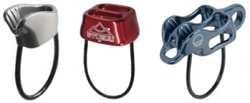
Figure 8Mostly used in rescue, canyoneering, tactical, work safety, or by old school climbers and rappellers. One reason they went out of popularity with recreational climbers is because they tend to create twists in the rope. 
Brake AssistThese devices assist in stopping the rope when a climber falls or hangs on the rope. 
Often referred to as “auto-blocking” but that’s not the official terminology because no belay device should be assumed to work automatically by itself, even if it feels like it does (or does most the time). PlateWhen simplicity is a must, or you started climbing before Tubers were the norm. Bonus: They tend to be very light weight. 
DescenderFor rappelling, not for belaying a lead climber or top-roping. 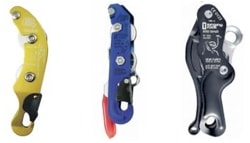 |
Brake Assist - Mechanical |
Weight (g)  Weight (g)In grams, the weight, as stated by the manufacturer/brand. |
200 g |
Belay Brake Assist  Belay Brake AssistThis is when the belay device significantly reduces the amount of holding power the belayer must exert to stop a fall and hold a climber. This is also called "assisted-braking" as the device must hold a significant amount of the climber’s weight; this term does not include friction-adding "teeth" found on some tube style belay devices. Confusingly referred to as “auto-blocking” or “auto-locking” these terms wrongly imply the device will always, automatically, stop a fall or hold a climber even if the belayer/rappeller is hands-free. These devices are not meant to be used without a hand on the braking side of the rope; the belayers/rapppeller brake hand should always be on the brake rope. Worth ConsideringMost of the mechanical brake assist devices only hold a single strand of rope and are not capable of double-strand rappelling (the most common method of rappel). |
Yes |
| Rope Options | 1 rope only |
Guide Mode  Guide ModeThis is when you belay directly off the anchor instead of your harness. Guide mode is helpful if you climb outdoors a lot because it reduces the holding power required from the belayer. When your partner falls or rests, the weight of the climber is held mostly by the anchor and the belay device. Tubers and PlatesWhen belaying in "guide mode," the tubers and plates turn auto-blocking. During a fall, the climbing rope pinches the slack rope, completely stopping the movement of either rope. A common guide mode setup shown below. 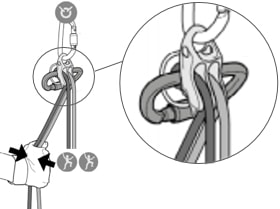
Mechanical Brake Assist DevicesThere is no difference in the functionality of the device. A brake-hand should always be on the rope to ensure the climber is caught in the case of a fall. A common guide mode setup shown below. 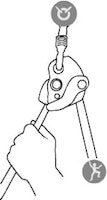
Where guide mode is used
Learn Morehttp://www.climbing.com/skill/essential-skills-auto-blocking-belay-devices/ |
1 follower only |
Teeth  TeethTeeth are only seen on tube devices. They add friction that helps grip the rope for more belaying control. This is helpful for belaying heavier climbers. Teeth are becoming standard on new tube devices. 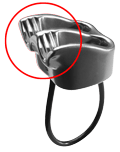
Worth ConsideringTeeth do wear out. You can limit wear by rappelling on the side without teeth (if you don’t need the extra friction). Once they’re worn, you’ll still have a usable belay device, just less friction. |
No |
Rope Range (mm)  Rope Range (mm)The range of rope diameters, in millimeters, that the manufacturer/brand specifies can safely be used. This is the best case scenario and does not necessarily take into consideration that certified ropes have a tolerance of +/- .3 mm. Recently, manufacturers have started to add an "optimized" rope range -- this is the range that will result in the nicest handling of the belay device. | 8.9 mm - 10.5 mm |
Certification  CertificationsThe main climbing gear certifications are CE and UIAA--and normally the UIAA creates the rules that the CE body also supports. When possible, we try to list all the certifications the product carries. To sell a climbing product in Europe, the device must be CE certified. There are no official requirements to sell climbing gear in the US. The UIAA certification is a voluntary process. Learn MoreRock and Ice Certifications Guide |
CE, EN, UIAA |
No reviews yet.
The device does automatically lock off when weighted for lead and top rope belaying. Though this model is rated for ropes that are 8.7 to 10.5mm, I’ve found it to be jerky when the rope is 9.8mm or thicker, especially if its a well used rope. For top ropes it works great, just as well as a GRIGRI.
In conclusion the Petzl GriGri+ is a good addition to the GriGri range I don’t think it’s designed to replace the GriGri 2 and if you are a climber who likes to climb lightweight then the GriGri 2 is a great choice. If you are a guide/instructor, a beginner; a climber who climbs with children or someone who like to teach beginners then you would definitely benefit from the GriGri+, or if you are looking for a belay device for everything then it will be great.
So first off, it’s worth making clear that the GRIGRI+ isn’t a direct replacement for the GRIGRI 2, as both will be available side by side in shops - it’s just that the GRIGRI+ has a number of features that set it apart. Realistically it’s unlikely that many GRIGRI 2 owners will flock out to buy the GRIGRI+, but if you’re an owner of the original GRIGRI (like me) and haven’t yet upgraded, trying out the GRIGRI+ may make you think twice; however, there’s definitely a few things that might be of interest - here’s the breakdown.
The point of these exercises was to demonstrate just how important it is to be on your game: Even with an assisted belay device like the GRIGRI, both hands stay on the rope with slack carefully managed at all times. From what I could tell, the improved features of the GRIGRI+ would benefit everyone, especially professionals, guides, and instructors.
Based on the Grigri 2, this new version operate like its predecessor but features an anti-panic handle that, if the user pulls too far, automatically arrests the descent. This safety feature was incorporated to prevent the belayer from lowering the climber too quickly and pulling farther back on the handle instead of letting it go (which allows the cam to catch the rope). This new handle initially made lowering more complicated and jerky, but after testers learned how to use it, it worked well when the correct amount of pressure was applied. The device is ideal for toproping, as it captured progress well and felt extra safe for teaching new climbers how to belay. (The Grigri+ is not meant to replace the Grigri 2; instead, it should be considered a device geared toward beginner belayers.)
- ‹ previous
- 2 of 2
If you know of a good product video that should be here, let us know, and we'll put it up.
If you're looking for gear videos in general, check out our Vimeo and YouTube channels to see the newest gear.

